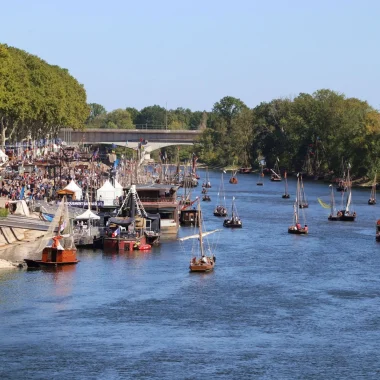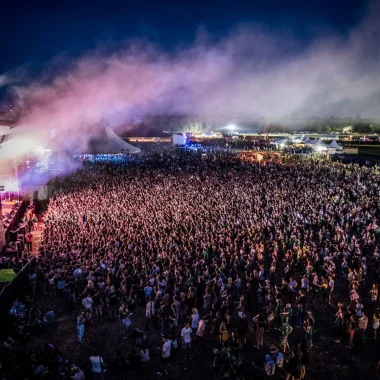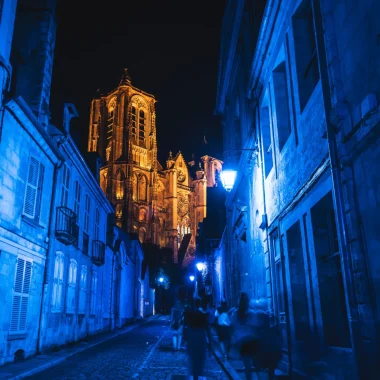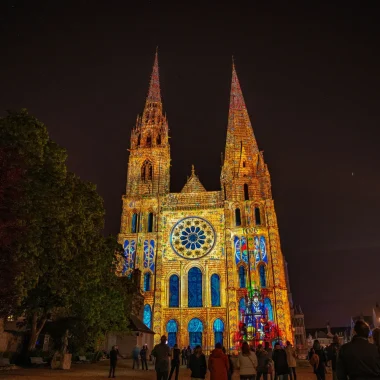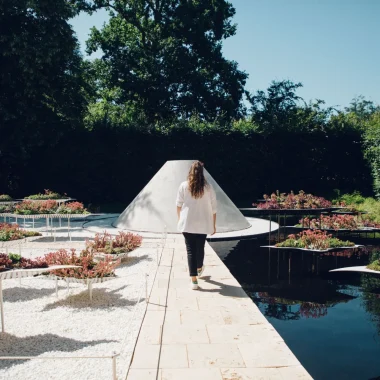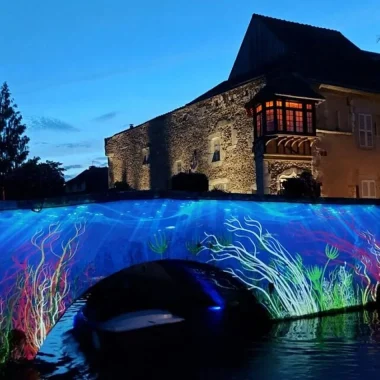For almost 600 years now, Orléans has been celebrating the woman who delivered it from the English in 1429. Every year, for ten days or so, the Johannine celebrations commemorate this key episode in the Hundred Years’ War.
Joan of Arc celebrations: a not-to-be-missed festive event in Orléans
Every spring, in late April and early May, Orléans celebrates its heroine during the Joan of Arc celebrations. Night-time shows, parades, medieval market, concerts… Joan of Arc and her victory are celebrated throughout the city.
Joan of Arc’s entry into the city
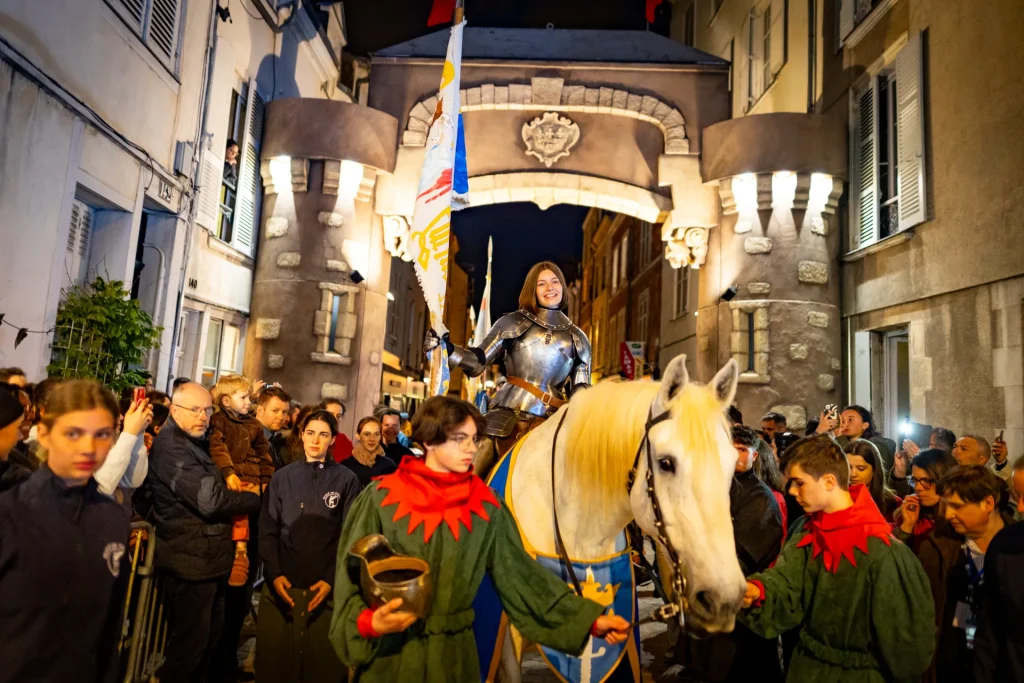
These commemorations, which are among the oldest in France, begin on the evening of 29 April. After the traditional presentation of the sword, Joan of Arc enters the city through the Burgundy Gate. Her route closely follows that of the heroine through the old quarters of the town.
Joan of Arc’s ride
On 1 May, Joan of Arc ‘s ride began in the town centre. She then headed for Saint-Loup in Saint-Jean-de-Braye, the site of her first victory alongside Jean de Dunois. The procession then crosses the Loire to follow the river on its left bank. It reached Les Tourelles, south of what is now the Pont Royal. It was here that Joan of Arc was wounded during the final offensive to free Orléans from the yoke of the English.
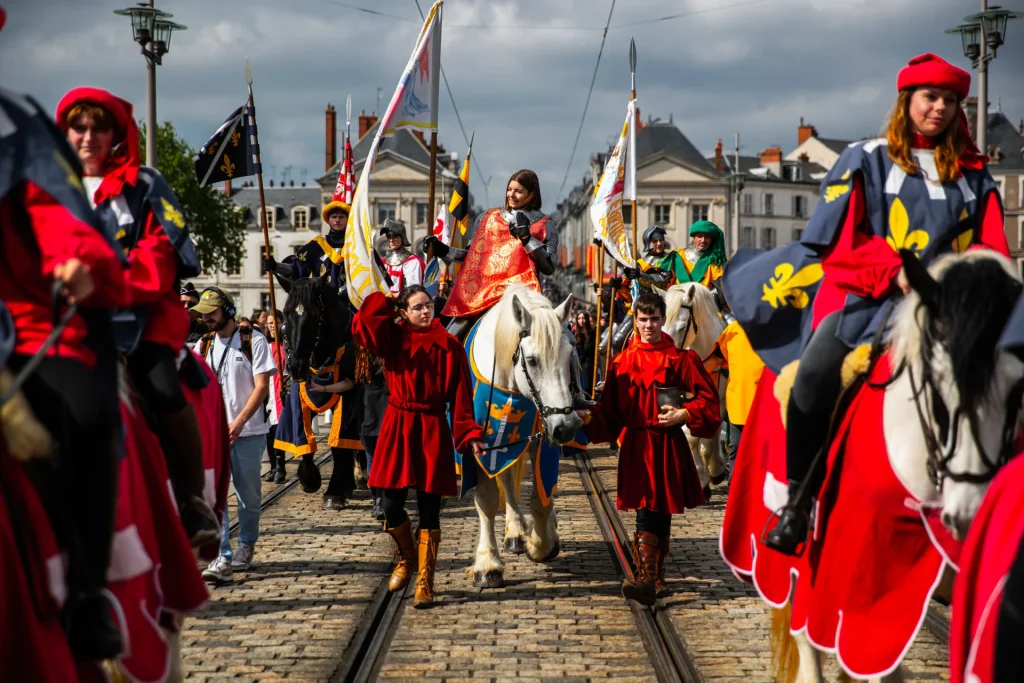
Parades and events on 7 and 8 May
On the evening of 7 May, in front of Sainte-Croix cathedral, Joan of Arc received the standard from the city’s civil and religious authorities. Then the cathedral’s towers and facade come alive with a colourful sound and light show that sublimates its architecture. At around 11pm, on the forecourt of the Théâtre d’Orléans, the Electro Set hosted by renowned DJs gets the youngsters dancing!

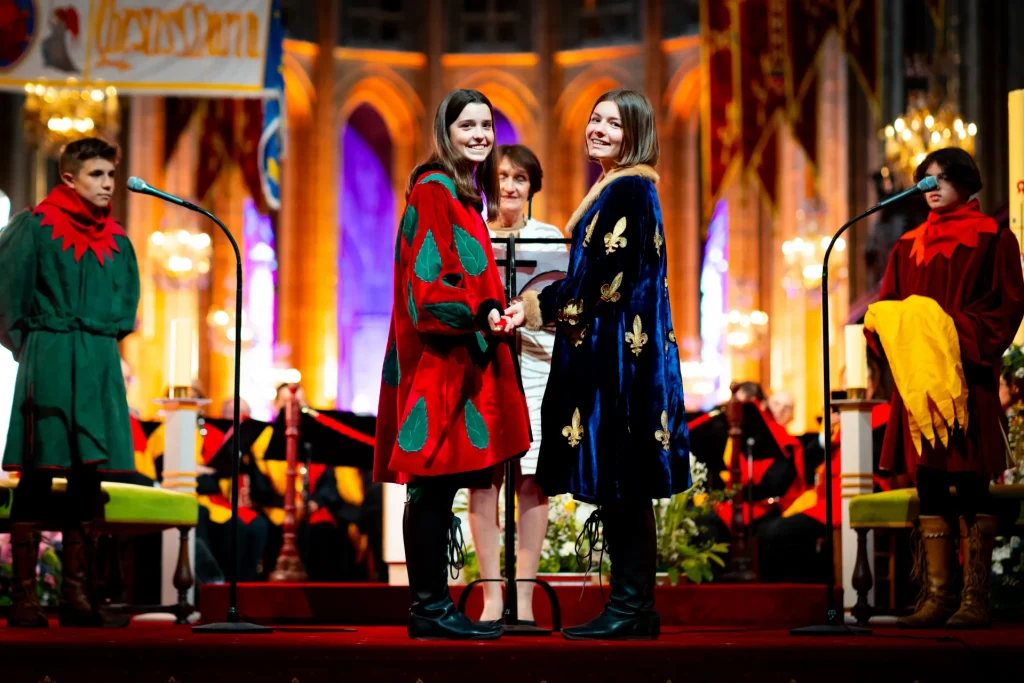

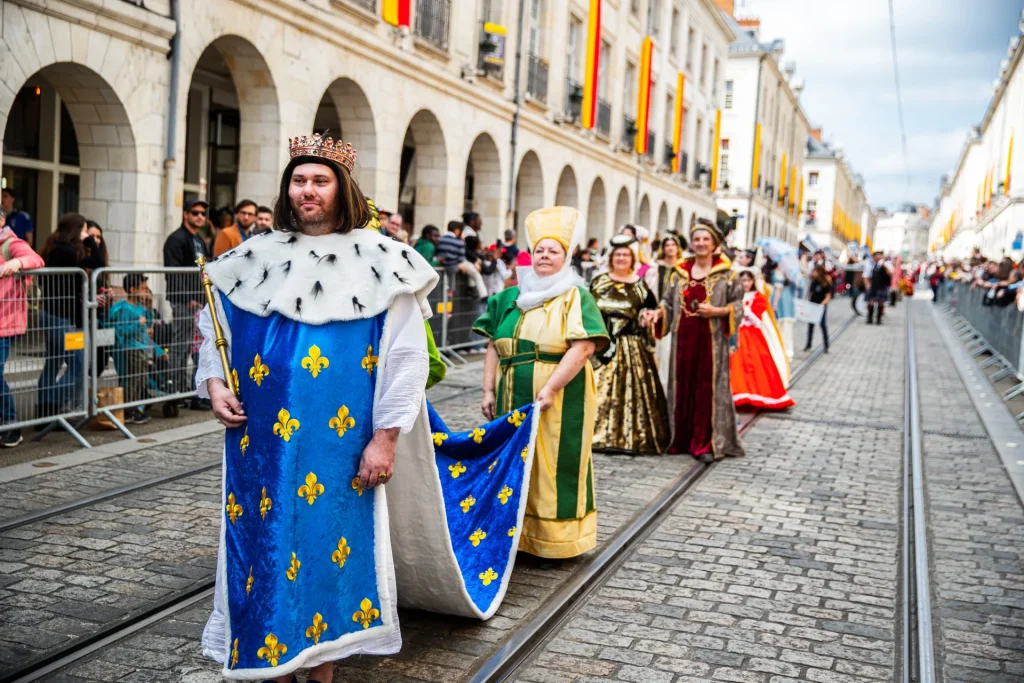
On 8 May, the traditional tributes and parades take place to celebrate the town’s heroine. After a religious service in the morning, the military parade is followed by a commemorative procession through the town led by Joan of Arc. On horseback, dressed in her armour, standard in hand, and surrounded by her pages, La Pucelle d’Orléans ride through the town. The procession that followed her, colourful and festive, was made up of various delegations. French provinces, extras in medieval costume, local associations…. From the cathedral to the Avenue Dauphine, via the Place du Martroi, where the equestrian statue of Joan of Arc celebrates her heroine, enjoy this colourful parade. At the end of the day, back in front of the cathedral, Joan returns the standard to close the festivities.
The medieval market
Hear ye, hear ye, good folk! During the Johannine festivities, the medieval market awaits you in the Campo Santo, a stone’s throw from the cathedral. Just step through the gates and you’ll be plunged into the heart of the Middle Ages. Wander among the stalls of merchants and craftsmen. Dances, juggling, music, ancient games, fights, a mini-farm and taverns for feasting are all on offer!
All the other festivities
Every year, the Orléans Johannine celebrations are an opportunity for the city to put on a wide-ranging programme of events. Concerts, exhibitions, lectures, guided tours, a night-time show, activities for children… Orléans celebrates its heroine with a bang.
In the footsteps of Joan of Arc in Orléans
To celebrate the woman who liberated the city from the English ‘yoke’, the city of Joan of Arc is decked out in its finest finery. Admire the Rue Jeanne d’Arc and the Rue Royale adorned with impressive colourful flags. The town centre is also filled with magnificent plant creations and floral arrangements. In Place du Martroi, the equestrian statue of Joan of Arc is surrounded by a sea of colour. Near the cathedral, in the courtyard of the Hôtel Groslot, another statue celebrates the Pucelle d’Orléans.


To find out more about the local heroine, visit the Maison de Jeanne d’Arc. This timber-framed building, reconstructed in the 20th century, is reminiscent of that of Jacques Boucher, treasurer to the Duke of Orléans. It was here that Joan of Arc stayed during the siege of Orléans. A panoramic film on the Hundred Years’ War, interactive terminals, the story of Joan of Arc and numerous documents await you.
And if your steps take you as far as rue Isabelle Romée, you should know that this is a tribute to Joan of Arc‘s mother. After the death of her husband in 1440, she lived in a small village nearby, receiving a pension from the city of Orléans.
Joan of Arc: history and epic
Joan of Arc ‘s victory over the English at the siege of Orléans led her to travel throughout the kingdom of France. From her native village to Rouen, where she was burnt, Joan of Arc left her mark on many places in the Loire Valley.
Joan of Arc, the story of her vocation
The daughter of Isabelle and Jacques d’Arc, Joan was born around 1412 in the small village of Domrémy in Lorraine. It was near her father’s house that she heard voices for the first time. They were those of Saints Catherine and Margaret and the Archangel Saint Michael. As she explained during her trial, these voices asked her to save the kingdom of France, which was then in the hands of the English. Joan of Arc was aware of the siege of Orléans at the end of 1428/beginning of 1429. From then on, she listened to these voices. Dressed in a man’s costume, she set off to meet Charles VII.
The epic of Joan of Arc in the Loire Valley
Whether or not you have the opportunity to attend the Fêtes Johanniques d’Orléans, you should know that Joan of Arc stopped off at many places in the Loire Valley on her journey. Here are the main towns and châteaux where her memory lives on.
The Royal Fortress of Chinon. It was in this vast fortress overlooking the Vienne that Joan of Arc came to meet Charles VII. She considered him to be the legitimate heir to the throne of France. She met him there twice. The first time was during the so-called ‘recognition’ scene. Jeanne walked towards Charles VII, who was dressed as one of his valets. She saw him a second time after advisors and theologians had attested to her honesty and virginity. She then obtained an army from him to raise the siege of Orléans.
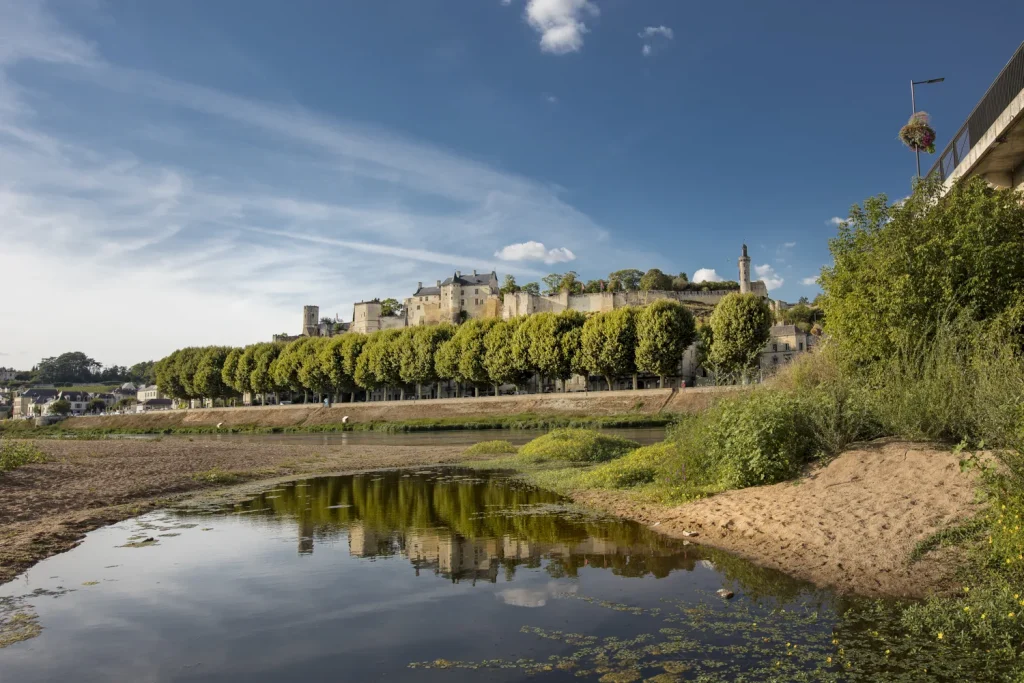
The stables at Château du Rivau.
It was here, a short distance from Chinon, that war horses were bred. Joan of Arc came here to collect the steeds provided by the Dauphin to liberate Orleans and drive the English out of France.
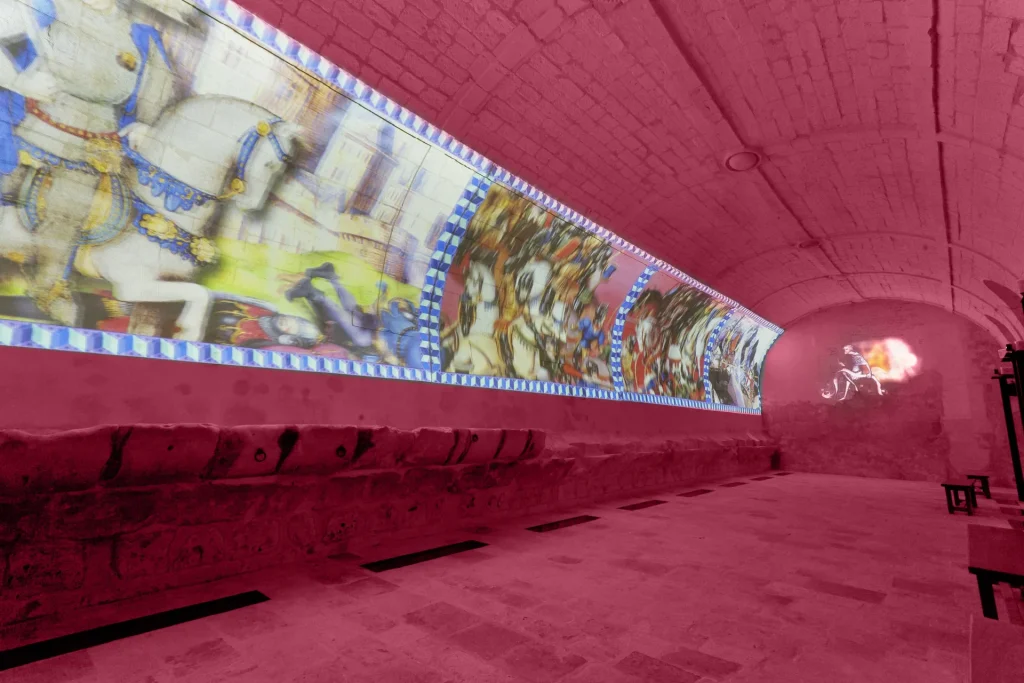
The old quarters of Tours.
Joan of Arc then made a stopover in Tours, where she stayed for a month. This is where her armour is said to have been made. In Rue Colbert, a half-timbered house bears witness to the visit of the Pucelle d’Orléans.
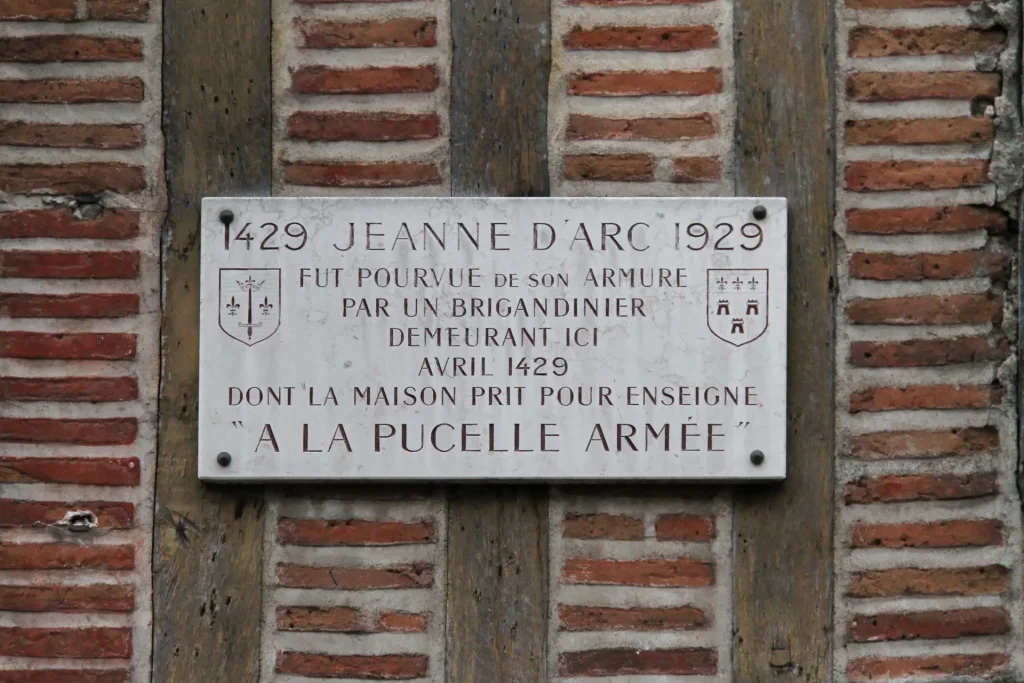
Orléans: Under siege for six months, it took Joan of Arc and her companions around ten days to lift the siege of Orléans. She entered the city on 29 April 1429. After this victory, and despite being seriously wounded at the battle of Les Tourelles, Joan and her army continued on their way. Jargeau, then Meung-sur-Loire, Beaugency and Patay were liberated from the English. For nearly six hundred years, the Johannine celebrations have paid tribute to the woman nicknamed La Pucelle d’Orléans.

The Royal City of Loches: victorious, Joan of Arc decided to return to see the Dauphin. He stayed at the royal lodgings in Loches. Her sole aim was to convince him to go to Reims to be crowned King. The coronation took place there on 17 July 1429.
The Château de Sully-sur-Loire. Joan of Arc first came here to meet the Dauphin. But it was during her second visit that she was taken prisoner by Georges de la Trémoïlle, who owned the castle and was close to the English. She nevertheless managed to escape. Some time later, however, she was captured by the Burgundians and handed over to the English. She died at the stake in Rouen in 1431.
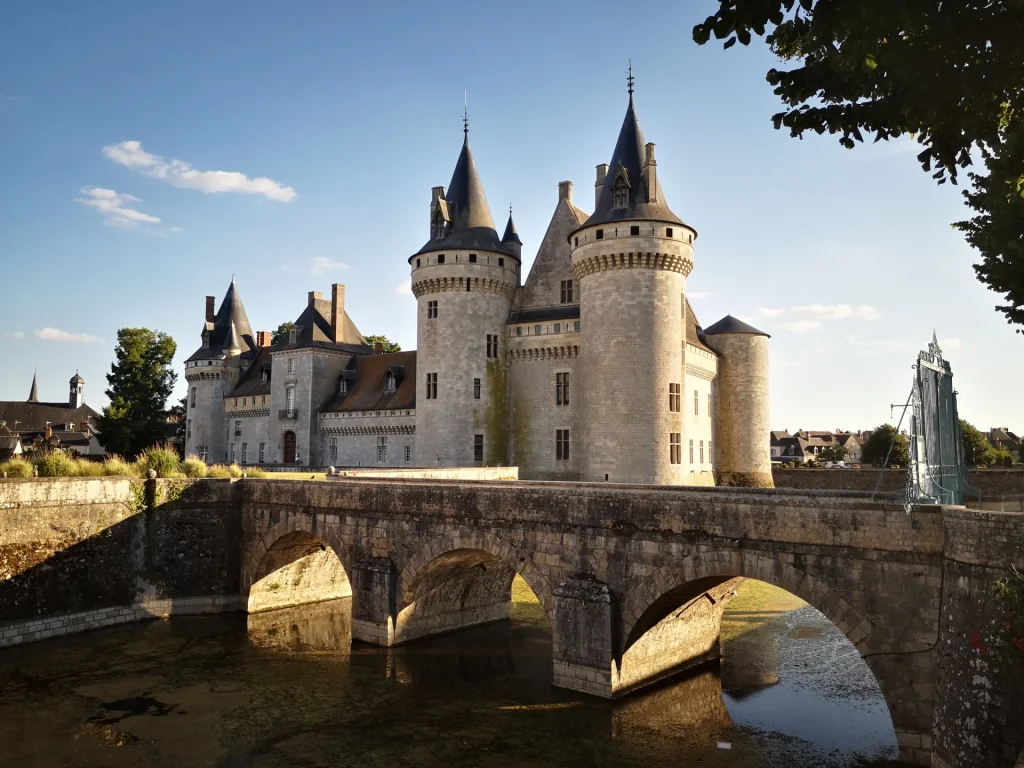
YOUR questions :
Are the Joan of Arc celebrations free or chargeable?
Joan of Arc celebrations are free.
What are the highlights of the Joan of Arc celebrations?
The electro set, Joan of Arc’s entry into the city, the medieval market in the Campo Santo, the sound and light show on the cathedral and the parades all day on 8 May are all must-sees!
Where can I park when I come to attend the Joan of Arc Festival?
The whole of the city centre is celebrating: to make it easier to get around, we recommend that you park your car in one of the tramway’s park-and-ride facilities and take the tramway to get closer to the city centre.


